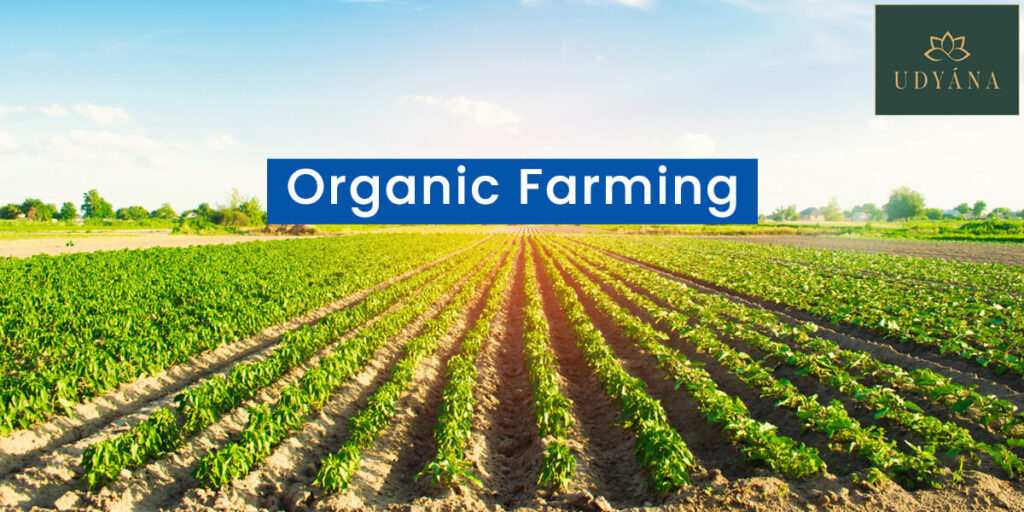Organic farming has various meanings and interpretations, but they all boil down to the fact that it is a model that depends on conservation planning rather than foreign plant nutrients. It’s a strategy that eliminates artificial inputs including chemical fertilizers and agrochemicals, pharmaceutical medications, genetically manipulated seeds, and varieties, preservation, additives, and radiation exposure, and starts to address potential positive and negative implications. These are supplemented with location-specific management methods that preserve and improve long-term agricultural productivity while also preventing pests and illnesses.
If organic farming practices are organized in manufacturing, accreditation, and advertising, they can raise farm output, restore decades of potential pollution, and connect local farm households to a more ecological utility grid, improving food security. In recent years, a growing majority of farmers have expressed a loss of enthusiasm for agriculture, and some who used to produce have relocated to other locations. One strategy to enhance consciousness of food and nutrition security is to practice hydroponic gardening. The widespread use of pesticides and insecticides and artificial fertilizers harms the soil and resources. Significant potential impacts include loss of subsoil, decreased soil productivity, pollution of groundwater and surface water, and genetic variety reduction.
Organic farming is therefore significant because it is a comprehensive production systematic process that supports and increases agro-ecosystem integrity, encompassing biodiversity, ecosystem functioning, and soil microbial properties. Sustainable farming practices have been proved in various research to provide even better yields than traditional agricultural methods. There was also a substantial difference in environmental health markers including nitrogen mineralization capacity and microorganism population and diversification, which were greater in organic agriculture. Organic farms have a much lower disease and pest frequency due to improved soil structure. The focus on embedded electronic agricultural systems can reinvigorate rural economies and communities.
Lesser farm pollution-
While there is no such thing as “farm haze,” conventional farming does contribute to pollution in the shape of discharge from nitrogen chemicals and chemical insecticides, which harm the environment. This discharge penetrates the groundwater aquifers in the area. The ecosystem benefited from the elimination of toxic substances through sustainable agriculture. Organic farming increases soil quality, reduces the danger of groundwater contamination, and restores soil in locations where groundwater resources have already been harmed.
Quality of soil-
Cropping systems, mixed cropping, associated microorganisms, organic cultivation, organic fertilizers, and limited plowing are all-important soil-building methods in organic farming. These promote soil biodiversity, which improves soil development and architecture and makes systems more robust. As a result, nutrition and fuel cycling improves, and the soil’s water and nutrient resistive properties improve, accounting for the lack of mineral fertilizers. Land degradation control is also greatly aided by such management measures. The amount of time the topsoil is subjected to erosive pressures is reduced, soil diversification is enhanced, and nutritional losses are minimized, all of which contribute to the preservation and enhancement of agricultural production.
Change in air quality and climate quality-
Sustainable farming decreases the use of exhaustible energy by reducing the demand for agrochemicals (these need high quantities of fossil fuel to be manufactured). Organic agriculture’s capacity to trap large amounts of carbon helps to mitigate the number of greenhouse gases. Many sustainable farm management techniques (such as limited plowing, restoring crop wastes to the ground, using crop production and seasons, and including more nitrogen-fixing lentils) improve carbon release to the soil, enhancing productivity and promoting carbon sequestration. A lot of studies have found that organic soil carbon content is much greater when agricultural production is practiced. The more organic material is preserved in the ground, the greater agriculture’s ability to combat global warming.
Biodiversity-
Throughout all levels, farming practices are both stewards and users of diversification. Traditionally and modified seeds and strains are favored at the gene expression level because they are more disease resistant and resilient to humid environments. Numerous pairings of flora and fauna maximize nutrient and energy cycles for crop production at species identification. The sustainability of the natural regions inside and surrounding organic fields, as well as the lack of synthetic chemicals, produce adequate habitats for animals at the base of the food chain. The use of underutilized organisms regularly lowers agricultural production loss, resulting in a stronger gene pool – the foundation that helps in bridging.
Production of genetically modifying organisms-
GMOs are not allowed in terrestrial ecosystems at any point during the development, manufacturing, or processing of natural foods. Because the future effect of GMOs on the environment and public health is unknown, sustainable farming is taking a conservative approach and promoting natural diversification. As a result, the organic certification ensures that GMOs were not utilized purposefully in the manufacture and manufacturing of organic goods.
Ecological diversity-
Organic agriculture’s influence on environmental assets favors agro-ecosystem connections that are critical for both agrarian output and environmental protection. Soil formation and reconditioning, soil stability, resource conservation, carbon capture and storage, minerals cycling, predators, pollinating, and ecosystems are among the ecosystem goods and services obtained. When a customer chooses organic ingredients, he or she is promoting a less damaging agriculture system with his or her disposable income. Agriculture’s underlying environmental costs of natural asset deterioration are decreased.
Sustainability-
Many environmental changes are long-term and develop gradually over time. Sustainable farming analyzes the agro-medium ecosystem and the long-term effects of farming production. Its goal is to generate food while maintaining environmental integrity to avoid difficulties with agricultural productivity or pests. Sustainable farming adopts a preventative strategy rather than reacting to issues as they arise.
